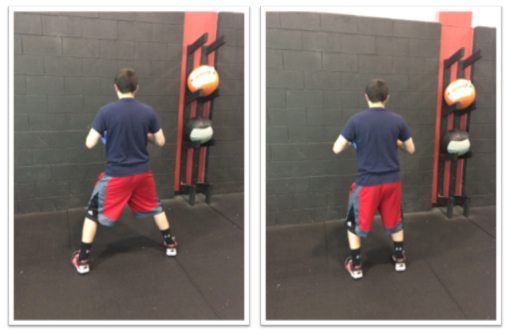I work with with a lot of youth athletes, especially baseball players. I am often amazed at how some of our younger athletes have such poor movement skills. Many are 6 inches away from touching their toes! I’m sure this is a trend this is not going away as our society spends more and more time staring at our iPhones and less on long term athletic development.
The body is great at compensating and finding the path of least resistance. Here is a quick tip that you can apply to many different exercises to enhance core stability.
Base of Support
When the core and entire lumbopelvic region has poor motor control and stability, especially in the transverse and frontal planes, a way the body likes to compensate is by widening the base of support. Here is an example of a young athlete performing a medicine ball chest pass. Notice his base of support in the first photo. This was his natural set up position.

By widening his base of support, he can likely generate more power during the exercise by making it more stable in general. However, in a training environment, I want to assure that we develop both power and control.
By narrowing his base of support, as you can see in the second photo, he has to stabilize his core during the exercise and work on developing power while controlling the force of the ball. This is going to have a more functional carry over into his sport.
Building athletes isn’t always just about strength and power, it’s also about movement quality and control. Watch for compensations at the base of support for signs of poor lumbopelvic and core stability.




